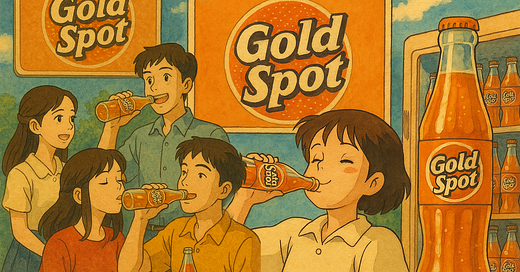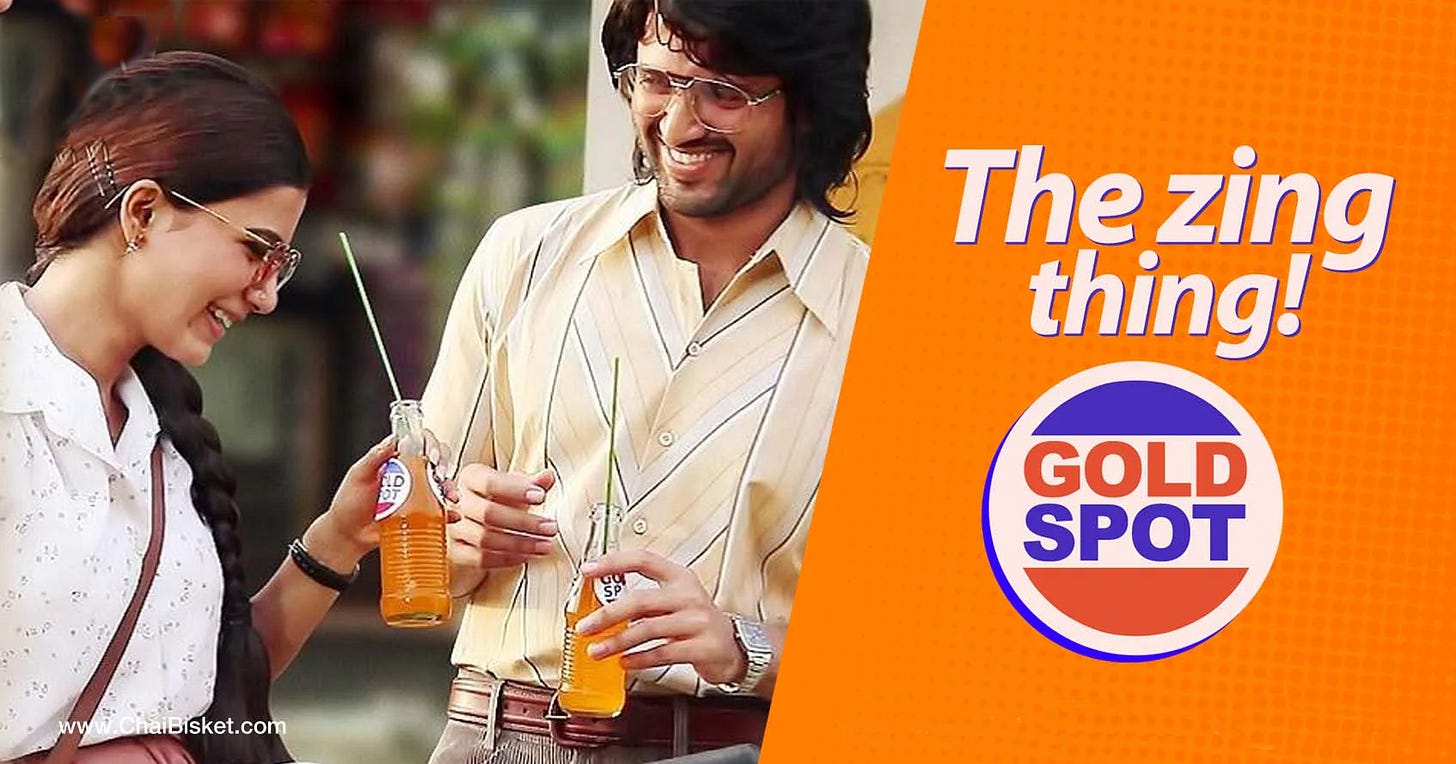The Indian soft drink landscape recently witnessed a nostalgic revival as Reliance Consumer Products Limited reintroduced the iconic Campa Cola to the market.
Once a symbol of Indian soft drink independence during the pre-liberalization era, Campa's return has sparked a wave of nostalgia among Generation X and older millennials who grew up with this homegrown brand. It also takes us back to another beloved Indian soft drink that defined childhoods across the nation.
The Era of Indigenous Indian Soft Drinks
The story of Indian soft drinks is intrinsically tied to the country's economic policies. When foreign brands like Coca-Cola exited the Indian market in 1977 due to the Foreign Exchange Regulation Act (FERA), it created a vacuum. It was however quickly filled by a trio of Parle Export beverages: Gold Spot (orange), Limca (lemon) and Thums Up (cola). At the same time, Pure Drinks Group introduced Campa Cola, which rapidly gained massive popularity.
Other notable Indian soft drinks of that era included Dukes' Mangola, a mango-flavored beverage; Double Seven by the government-owned Modern Food Industries; McDowell's Sprint; and various local favorites like Torino, Kissan, and Rogers. These brands weren't merely substitutes; they became cultural icons representing Indian entrepreneurship and self-reliance.
The Rise and Fall of the "Zing Thing"
Among many Indian soft drinks, Gold Spot however held a special place always in consumers' hearts. Launched in the 1950s by Parle Exports, the orange-flavored carbonated beverage became an instant hit with its distinctive sweet taste and vibrant orange color. Its catchy slogan, "The Zing Thing," perfectly captured its effervescent personality.
The Golden Appeal
Gold Spot's charm lay in its unique formulation. Unlike other orange sodas, it had a distinctive sweet taste with an unique balance of citrus notes and carbonate fizz. The beverage was particularly popular among children and young adults, often associated with special occasions, cinema outings, and family gatherings.
The marketing strategy for Gold Spot was equally memorable. Television commercials featured vibrant, energetic youngsters enjoying the drink, accompanied by catchy jingles that became part of the national consciousness. The advertisements positioned Gold Spot as a lifestyle choice for the young and the young at heart, apart from its generic value of refreshment.
Mirinda being a global brand since the 1960s, became Gold Spot's namesis. Soon the indigenous brands gradually disappeared from the shelves. Only Thums Up survived under Coca-Cola's ownership, due to its overwhelming popularity.
Fanta - An Unfair Replacement
When Coca-Cola acquired Gold Spot, the company strategically phased it out to promote Fanta, its global orange soda brand. From a multinational perspective, this made business sense towards achieving economies of scale. However, it left a distinct void in the market.
Despite Coca-Cola's continuous efforts, many consumers felt that Fanta never quite captured the magic of Gold Spot.
Key differences were related to discerning palates…
Taste Profile: Gold Spot’s distinctive ssweet taste and uniquely Indian flavor contrasted with Fanta’s more pronounced citrus tang with less sweetness.
Color: Fanta's lighter orange hue didn't evoke the same visual satisfaction against a visually more appealing deep orange color of Gold Spot, which became a part of its identity. .
Carbonation: Gold Spot’s smoother, less aggressive carbonation was a preferred choice, especially among younger consumers.
Cultural Connection: Most importantly, Gold Spot was developed for Indian taste preferences and had decades of cultural associations that Fanta, as a foreign import, simply couldn't replicate.
Even Campa-Orange, which was a decent alternative to Gold Spot during the pre-liberalization era, lacked its "zing", and could never achieve the same cult status.
The Persistent Thirst for Citrus Orange
An analysis of the Indian soft drink market over the past decade (FY 2015-25) reveals some interesting patterns. According to market research data, orange-flavored carbonated beverages and fruit juices have consistently maintained a strong position in the Indian beverage landscape.
Orange-flavored carbonated drinks account for approximately 12-15% of the total soft drink market in India. Cola drinks dominate with ~40-45% share.
In the fruit juice and nectar category, orange flavors command about 18-22% of the market, depending on the region and season. Mango however dominates at ~30-35%, but it’s more seasonal vs. the year-round appeal of orange.
The Indian soft drink market (carbonated + juices) has grown at a CAGR of 5.2-6.8%. Orange-flavored beverages contributed to steady growth that slowed down a bit after Covid-19.
Consumer surveys also indicate that orange remains the preferred flavor among children aged 8-14. It’s also the 2nd most popular (after cola) among young adults aged 15-25.
Regional data shows particularly strong preference for orange-flavored beverages in Western and Southern India. Gold Spot historically enjoyed tremendous popularity in these areas.
These statistics demonstrate a persistent consumer demand for orange-flavored beverages that transcends generations. Brands like Fanta, Mirinda, and Slice (in the mango category) have repeatedly attempted to capture this market.
However, some industry analysts feel there’s an unfilled niche for a beverage that combines nostalgia with contemporary appeal. Could it be then, a space which only Gold Spot could reclaim?
The Case for Gold Spot's Revival
The successful 2023 relaunch of Campa by Reliance Consumer Products Limited provides a compelling precedent for Gold Spot's potential revival.
Several factors make this proposition not just feasible but potentially lucrative:
1. Nostalgia Marketing Potential
In recent past, Nostalgia has proven to be a powerful marketing tool. Brands that invoke fond memories of the past often generate immediate consumer interest and loyalty. Just as Campa's return stirred excitement among those who remembered it, Gold Spot's revival would likely trigger a similar response.
The Gen X and the Millennials that grew up with Gold Spot now has purchasing power and children of their own. They look for premium nostalgic experiences, thus creating a multi-generational marketing opportunity.
2. Unique Taste Profile
Despite multiple orange sodas in the market, none have successfully replicated Gold Spot's distinctive flavor.
By reviving the original formula with minor adjustments to suit contemporary taste preferences, Gold Spot could offer something genuinely different in an otherwise homogenized market.
3. The "Made in India" Advantage
The recent shift toward supporting homegrown brands and businesses presents an opportune moment for Gold Spot's return.
As a brand that symbolizes Indian entrepreneurship from the pre-liberalization era, Gold Spot could capitalize on the growing consumer preference for local products with authentic Indian heritage.
4. Gap in the Market
Despite the presence of Fanta and Mirinda, market research indicates that neither has achieved the same emotional connection with consumers that Gold Spot once enjoyed. This emotional gap represents a business opportunity that a revived Gold Spot could fill.
5. Diversification Strategy
For companies looking to expand their beverage portfolio, acquiring and relaunching Gold Spot could be a strategic move to diversify without the risks associated with creating an entirely new brand. The established name recognition would reduce marketing costs typically associated with new product launches.
Some comparable revivals are worth noting:
Pepsi's re-launch of Slice as a "mature" mango drink.
Cadbury's retro ads for 90s products.
Maruti's success with the new Grand Vitara, invoking the earlier Vitara nameplate.
Challenges and Considerations
Reviving Gold Spot would not be without challenges. The primary obstacle lies in ownership rights, as Coca-Cola presumably still holds the trademark. However, this isn't insurmountable - either through licensing agreements or potentially through trademark expiration if Coca-Cola has not actively maintained it.
Another consideration is adapting the formulation to modern health consciousness without losing the essential character that made Gold Spot beloved. Reduced sugar content, natural coloring agents, and fruit-based variants could address health concerns while maintaining the brand's identity.
As seen through Campa’s revival, Retro packaging (e.g., glass bottles with old-style branding) could be a huge hook too.
The Time is Ripe for the "Zing Thing"
With Campa's return demonstrating the viability of reviving retro Indian soft drink brands, the stage seems set for Gold Spot's potential comeback.
The persistent popularity of orange-flavored beverages, combined with the power of nostalgia marketing and growing preference for homegrown brands, creates a favorable environment for the return of "The Zing Thing."
If executed correctly, Gold Spot's revival could capture not just the market share of those seeking a taste of nostalgia, but also a new generation of consumers looking for authentic Indian brands with unique flavor profiles.
In a market dominated by international beverage giants, a revitalized Gold Spot could once again symbolize Indian entrepreneurship and innovation, just as it did decades ago.








